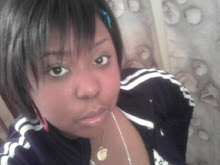
The first project the circle project showed us how to communicate and look at our work through using thumbnails, and using mind maps to get all of our thoughts thrown out onto to the table. We learned how to communicate words abstractly with project one the dot project and applied that to our Haikus in project three. Only instead of using dots we used mark making tools for our last project to communicate what each line in our haiku was representing. In project two with our line projects I feel like we learned most definitely about juxtaposition, and how to work within spatial relationships. These exercises we encountered this year taught about working with design principals; Using scale, framing asymmetry, symmetry, layering and working within a space.

One thing I leaned about using black and white…if it looks like what you’re trying to portray in black and white then it will look right in color. Learning in the basic black and white concepts really taught me to look at things really differently, and more closely. Working with analog shapes and figuring how they will look about the frame is definitely rise from the dot project trying to make sure a dot looks and feels the way you’re trying to portray is the same difference when trying to place an analog mark within a frame to speak and have meaning to the audience. Also taking from what I leaned from the line project and learning to use graphics in a spatial manor when going out into the world taking pictures of buildings and lines of all sorts. All I do now and still sometimes do is see lines and how they work in space, and interact with other objects. I saw that when creating the animation for my haiku project learning how and where to exactly place my shape and see how it works within a space.

Another thing I realize that were learning thought the semester is working in a fast paced environment. Every project I feel took a great deal of a long process in a short period of time. Another thing I tried to get used to. With every project we learned how to work mostly with our hands and combine digital work within that process. So with that major observation if i am in attendence here at KCAI or wherever i may be next semester I will take what I have learned from my first semester here in the design depatment and what concepts i have gained and i will use them for next semester I have learned some not more than what i wanted to learn but everybodys got their own learning pace right?? hopefully next year will be more successfrul for my work.













